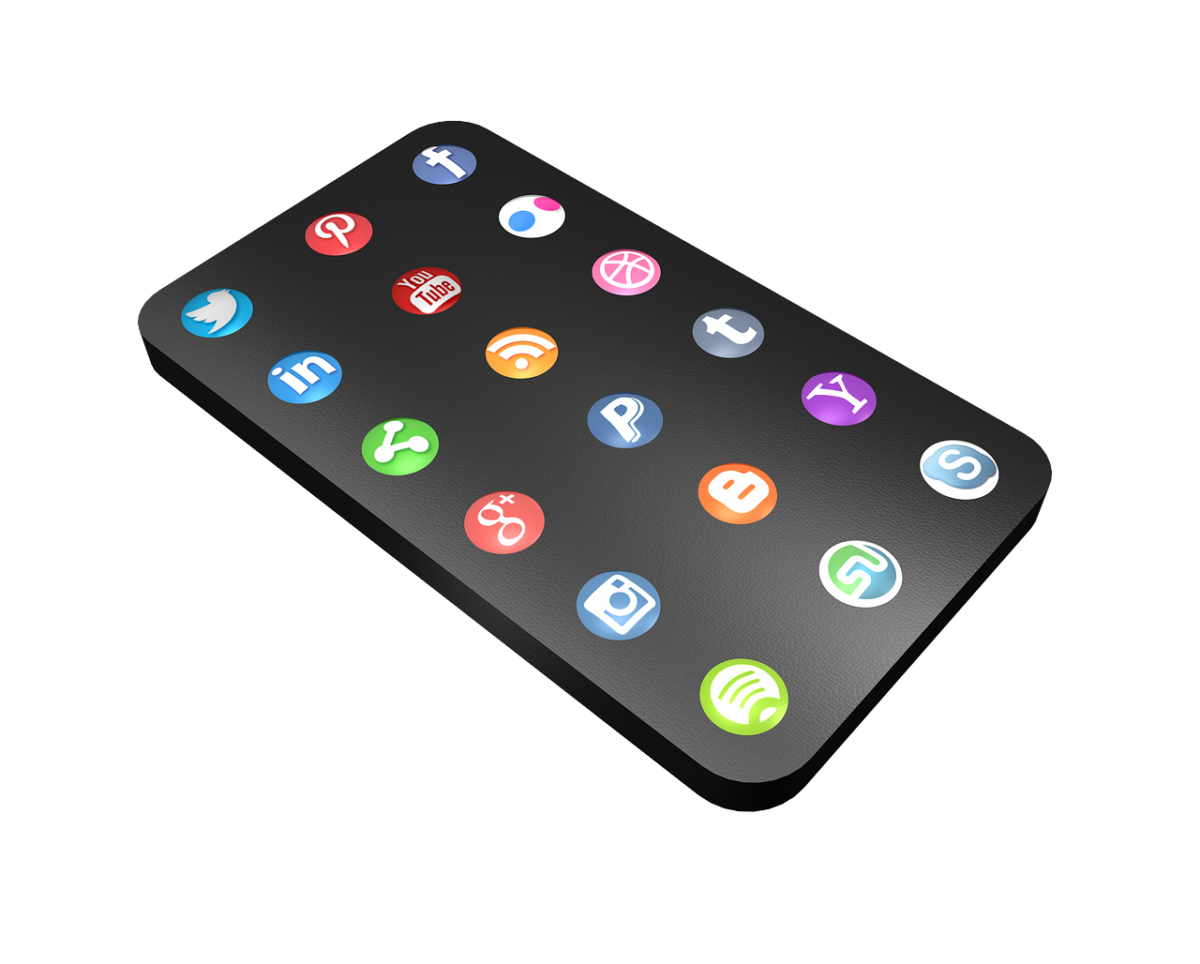The Benefits of Using Mobile Apps for Internal Communications

Internal communications is all about exchanging messages and info inside an organization. It’s the lifeblood that enables smooth collaboration among employees, helping them reach common goals and making them feel like they belong.
It’s more than just emails or memos. Intranets, team meetings, town halls, and social media networks can all be used to bridge knowledge gaps, reduce silos, and create transparency.
Clarity and consistency are key for effective communication. Crafting compelling stories that are relatable to employees will boost connections within the organization and strengthen shared values.
Including feedback mechanisms is essential too. Surveys, suggestion boxes, and open forums give employees a chance to express themselves. This shows their opinions matter and encourages a culture of inclusivity.
Technology also plays an important role. Mobile applications and software solutions can provide real-time updates. They can also help remote workers and geographically dispersed teams stay connected.
Importance of effective internal communications
Effective internal communications are key for any organization’s success. They help employees collaborate, work together and stay on the same page. They also make it easier to share ideas, information and updates.
Good internal communications create a sense of transparency and trust between employees. This makes them feel valued and informed, which boosts morale and engagement. It also stops misunderstandings and rumors.
Effective internal communication helps to align employees with the organization’s goals and values. When everyone knows the company’s vision, they can better help achieve it.
Organizations should use various channels for internal communications. For example, team meetings, emails, newsletters, intranet platforms and social media tools. It’s important to choose the right medium for each message.
One real-life story emphasizes the importance of effective internal communications. In 1982, Johnson & Johnson faced a big crisis. Cyanide-laced Tylenol capsules resulted in several deaths. The company reacted swiftly by recalling all Tylenol products. This fast response helped them regain public trust and set standards for crisis management.
Benefits of using mobile apps for internal communications
To reap the benefits of using mobile apps for internal communications, consider the advantages offered by improved accessibility and convenience, increased employee engagement and collaboration, instant and real-time communication, and cost and time savings. Each sub-section addresses a specific solution that can enhance internal communication within your organization.
Improved accessibility and convenience
Mobile apps offer flexibility, real-time communication, easy information retrieval, and collaboration for employees. Push notifications, multilingual support, and improved accessibility are all unique benefits of mobile apps.
A multinational company experienced the advantages of a mobile app for internal communications. Prior to this, communication was fragmented and hard to access. But with the mobile app, they had improved accessibility, collaboration, and efficiency.
Increased employee engagement and collaboration
Mobile apps are the key to enhancing employee collaboration and engagement. They provide fast communication, collaboration, and accessibility benefits. Additionally, they incorporate gamification elements and feedback mechanisms. Apps also streamline workflows, and offer unique features like social groups and built-in analytics.
Organizations should customize the app to match their branding and culture. Training and support should be provided to help employees use the app. To promote engagement, interactive content and a collaborative environment should be created. Finally, organizations should monitor and adapt the app usage and collect feedback from users.
By utilizing mobile apps for internal communications, organizations can increase productivity, communication, and success. The apps unite all employees, no matter their location or role.
Instant and real-time communication
Organizations must make use of mobile apps for efficient collaboration! Teams can interact no matter their location. Furthermore, when faced with issues, employees can instantly contact colleagues and superiors to solve problems and prevent downtime.
Notifying employees in real time is key! Apps with instant messaging features keep them up-to-date on important tasks and deadlines. Additionally, video conferencing, file sharing, and document collaboration tools are available to improve the effectiveness of communication.
It’s essential that employees are taught how to use these apps. Through training sessions and promoting its advantages, everyone can be equipped with the necessary skills to utilize this powerful tool! Lastly, virtual communities bring a sense of belonging, boosting morale and overall engagement.
Cost and time savings
Mobile apps for internal communication bring big savings in cost and time. This benefits the company financially and boosts performance and productivity.
- 1. More Efficient Communication: Mobile apps enable staff to talk and collaborate without long emails or physical meetings. This frees up time for other work.
- 2. “Lower Operation Costs”: Apps help cut printing and shipping costs. Plus, virtual meetings and conferences save on travel expenses.
- 3. Greater Flexibility: Apps let employees stay connected no matter their location or time zone. This helps to reduce delays as urgent matters can be addressed quickly, leading to faster decisions.
Plus, mobile apps have special features like immediate alerts and real-time updates that make organizations even more efficient.
Case studies of successful implementation
To streamline internal communications and enhance employee connectivity, explore case studies of successful implementation. Successful companies showcases how they can leverage mobile apps to streamline internal communications, while other companies focus on enhancing employee connectivity through mobile apps. Learn from their experiences to optimize your internal communication strategies.
Streamlining internal communications with mobile apps
Success in improving internal communication is evident in the utilization of mobile apps – here are five key points that showcase this achievement:
- Seamless collaboration with efficient communication.
- Real-time updates for no delays or miscommunication.
- Productivity boosted through access to documents on-the-go.
- Streamlined processes saves costs and increases efficiency.
- User-friendly platform creates better employee engagement.
Companies should have a competitive edge due to their commitment to leveraging technology. To realize the benefits of modern communication tools, businesses need to embrace initiatives like mobile apps. With them, internal communication is enhanced and overall success is driven.
Don’t miss out – integrate mobile apps for seamless collaboration, real-time updates, improved productivity, streamlined processes, and increased employee engagement. Stay connected and stay ahead of the competition!
Enhancing employee connectivity through mobile apps
These apps provide:
- User-friendly access to resources and tools
- Real-time messaging and video calls
- Seamless document sharing and editing
- Social interaction opportunities
- Task tracking and reminders
- Data security
Challenges and considerations
To overcome challenges and considerations in utilizing mobile apps for internal communications, address data security and privacy concerns, tackle adoption and training challenges, and ensure compatibility across different mobile devices.
Data security and privacy concerns
Cybercriminals are constantly evolving their tactics and creating new challenges for data security and privacy. Connected devices and growing amounts of personal data amplify the risk.
According to IBM Security X-Force, the average cost of a data breach is $3.86 million USD[1]. This highlights the importance of proactively addressing data security concerns.
Data security and privacy must be continuously attended to and invested in, all while protecting individual rights in the complex digital world.
Adoption and training challenges
Organizations need to provide comprehensive training to address employee concerns. This should emphasize the advantages of the change, with ongoing help and easy-to-understand concepts. Communication is also important for successful adoption.
Gartner Research Inc. report that if these challenges are not met, employee satisfaction levels drop and day-to-day operations become less efficient.
Awareness and understanding are often lacking, leading to reluctance.
Change can be resisted as it disrupts routines.
Time, budget and staff to train can be scarce.
Technology or processes can be too complex, causing frustration and errors.
Support from management or a team can be inadequate.
Ensuring compatibility across different mobile devices
Designing a mobile website or app, to be compatible across devices, has its challenges. Responsive design & frameworks help adapt display & interaction for each device. Buttons & menus must be accessible & responsive too. Test on multiple devices & platforms for layout & functional issues. Media queries help define specific styles for different screens. Ensuring compatibility is key for a wide audience & great user experience. Test & optimize your site for long term success!
Best practices for implementing mobile apps for internal communications
To achieve the best practices for implementing mobile apps for internal communications in your organization, leverage the benefits of setting clear objectives and goals, selecting the right mobile app platform, ensuring user-friendly interface and navigation, and providing regular updates and feedback mechanisms. Embrace these sub-sections as solutions to optimize your internal communication processes.
Setting clear objectives and goals

It’s essential to set clear objectives and goals when creating a mobile app for internal communication. This helps define purpose and scope, enabling developers to focus on the best features. Defining goals also allows for measuring and evaluating app performance using key performance indicators. Plus, employees are more likely to embrace and engage with a mobile app if they understand its purpose.
Organizational culture, employee feedback, and technological feasibility must be considered when setting objectives and goals. This ensures realistic expectations for the mobile app implementation.
To ensure success, these tips should be followed:
- Involve stakeholders from different departments to create a well-rounded set of goals.
- Prioritize user experience with an intuitive user interface.
- Monitor app usage, collect feedback, and analyze data for making improvements.
By doing this, organizations can maximize the potential impact of their mobile app implementation.
Selecting the right mobile app platform
Ensure the platform supports multiple operating systems, like iOS, Android, etc. Look for platforms with robust security measures to protect company info and prevent unauthorized access. Choose one that allows customization to fit your company’s branding and communication needs. Select one that integrates with existing systems, like email, project management tools, or HR software. Analyze platforms with comprehensive analytics to measure communication quality and make data-driven decisions.
Scalability is also important – pick a platform that can accommodate future growth and user demands.
In conclusion, select the perfect tool that’s reliable, flexible, secure, and improves employee interactions in your organization!
Ensuring user-friendly interface and navigation
Ensuring user-friendliness and smooth navigation is key for successful mobile apps made for internal communications. Here’s how:
- Design a clean, simple interface that makes it easy to go through different sections of the app.
- Adapt the layout for various screen sizes, to make sure the experience is the same on any device.
- Use clear and easy-to-understand labels, icons, and buttons – no matter the technical level of the user.
- Include search and filter functions to let users find the info they need faster.
For an extra boost, give personalized recommendations to each user, based on their past preferences and interactions. This will make navigating the app even smoother.
Picture a situation where workers can’t access important news or miss out on crucial data because of an ill-designed interface or complicated navigation. Don’t let your team lag behind! Enhance your internal communication app by following these tips. Your employees deserve an app that keeps them in the loop and helps them stay connected. Don’t wait any longer – act now!
Providing regular updates and feedback mechanisms
Keep employees informed – Send push notifications or in-app messages with important news, updates, and policy changes. This keeps everyone in the loop!
Solicit feedback – Give employees a voice with surveys, comment sections, or dedicated feedback forms. Hear them out and show that their opinion matters.
Promote two-way communication – Incorporate chatrooms or discussion boards. This encourages conversations and knowledge sharing.
Analyze usage data – Track user engagement with analytics tools. Regularly review this data to optimize the app.
Suggestions:
- Personalize notifications – Customize notifications according to the interests and roles of individual employees. This boosts engagement.
- Timely responses – Respond promptly to employee feedback. Show that you value their opinion by acknowledging their suggestions or concerns.
- Active participation – Gamify the feedback process by rewarding employees. This encourages regular participation.
Enhance internal communications through mobile apps with these practices for increased employee engagement and collaboration.
Conclusion
To conclude, reinforce the importance of incorporating mobile apps into your internal communications strategies. Recap the benefits and challenges we explored earlier. Highlight how mobile apps are integral to modern communication practices. Finally, urge organizations to actively explore and invest in mobile apps for internal communications.
Recap of the benefits and challenges discussed
Let’s recap the key points discussed throughout this article. Firstly, productivity can be improved by implementing strategies and using tools. Secondly, technology advances have made collaboration easier. Lastly, challenges such as data security need to be addressed.
Furthermore, it is essential to consider how these benefits and challenges interact. Challenges must be tackled for us to reap the advantages. Let me illustrate this with an example. Recently, an organization had their growth hindered by outdated systems, but they embraced change and found solutions, and experienced a remarkable transformation in their operations.
To sum up, as we reflect on the discussed benefits and challenges, it is evident that finding effective solutions leads to a prosperous future.
Emphasizing the importance of mobile apps in modern internal communications strategies
Mobile apps have become an essential part of modern internal communication strategies. They allow employees to stay connected, regardless of their location. Plus, they offer notifications and updates on the go!
These apps also offer features that boost collaboration and productivity. Sharing documents, scheduling meetings, and virtual conferences are just a few. This eliminates the need for emails or physical meetings.
Furthermore, mobile apps offer easy access to important information and resources. From company news to training materials, employees have everything they need at their fingertips. This promotes efficiency and helps individuals work effectively.
Encouraging organizations to explore and invest in mobile apps for internal communications.
Take your organization to the next level with mobile apps! This convenient platform allows for quick communication and real-time updates, eliminating the need for lengthy emails. It boosts collaboration by providing a centralized hub to share documents, exchange ideas, and work together. Plus, it increases employee engagement by offering interactive features such as surveys and polls. Investing in mobile apps demonstrates a commitment to staying ahead of digital transformation, giving organizations a competitive edge. Don’t get left behind – embrace this transformative tool today and seize the opportunity to explore!
Frequently Asked Questions
FAQs on the Benefits of Using Mobile Apps for Internal Communications
1. How can mobile apps improve internal communication?
Mobile apps provide instant access to company information, enabling employees to stay connected and informed at all times. They offer features like messaging, document sharing, and task management, enhancing collaboration and keeping teams aligned.
2. What are the advantages of using mobile apps for internal communications?
Mobile apps streamline communication processes, reducing the reliance on emails and traditional methods. They promote efficient information sharing, improve employee engagement, and boost productivity by enabling faster decision-making and real-time updates.
3. Are mobile apps secure for internal communications?
Yes, modern mobile apps prioritize data security and often offer encryption, multi-factor authentication, and secure cloud storage. It is crucial to choose reputable apps from trusted vendors and implement proper security measures to safeguard sensitive company information.
4. Do mobile apps work well for remote teams?
Absolutely! Mobile apps are especially beneficial for remote teams. They bridge geographical gaps by providing a centralized platform for communication, fostering teamwork, and ensuring remote employees feel connected and engaged with the rest of the organization.
5. Can mobile apps integrate with other business tools?
Many mobile apps are designed to integrate with popular business tools like project management software, customer relationship management (CRM) systems, and email platforms. This integration allows for seamless data sharing, enhances workflow, and eliminates the need to switch between multiple applications.
6. How can mobile apps enhance employee engagement?
Mobile apps offer interactive features like surveys, feedback forms, and social feeds, empowering employees to actively participate and share their opinions. They also facilitate recognition and rewards programs, making employees feel valued and increasing overall engagement levels within the organization.

